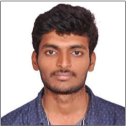Aerospace Medicine Quiz

-
Space equivalent zone is:
(a) 10000 - 15000 feet
(b) >50000 feet
(c) 15000 - 25000 feet
(d) 400 km above earth
-
In short-duration (4-5 days) space flight body water reduces by:
(a) 3-4% of the body weight
(b) 10-15% of the body weight
(c) No significant reduction
(d) 0.5 Litres
-
What happens to heart rate in spaceflight?
(a) Increases
(b) Reduces
(c) Does not change
(d) Becomes irregular
-
Mulder’s constant is
(a) Acceleration – time product
(b) Distance – time product
(c) Both the above
(d) None of the above
-
Human beings have maximum tolerance to acceleration in which axis?
(a) +Gz
(b) -Gz
(c) +Gx
(d) +Gy
-
Convulsions are a feature of GLOC that occur during which phase?
(a) Absolute incapacitation period
(b) Relative incapacitation period
(c) G onset period
(d) Not a feature of G-LOC
-
The MK 16 MOD 1 Closed-Circuit Mixed-Gas Underwater Breathing Apparatus (UBA) used by US Navy Divers can have a maximum ascent rate of:
(a) 30 feet per minute
(b) 10 feet per minute
(c) 15 feet per minute
(d) 25 feet per minute
(e) 20 feet per minute
-
During the rescue of Salyut – 7 space station, Russian cosmonauts working in unpowered platform developed symptoms of:
(a) Hyperbaria
(b) Heat strain
(c) Hypercarbia
(d) Toxic fumes inhalation
(e) Phthisis bulba
-
Which of the following is / are true about HBOT?
(a) Vasoconstriction occurs in non-ischemic tissues
(b) The effects of catecholamines are potentiated
(c) Endogenous antioxidants are stimulated
(d) Venous saturation becomes close to 100%
(e) HBO induces steep oxygen gradient in radiation damaged tissues
-
Post-flight symptoms may be induced and/or exacerbated by head movements during re-entry and immediately after landing due to:
(a) Hyposensitivity to angular head motions in all planes initially
(b) Hypersensitivity to angular head motions specially in the pitch plane being more provocative initially
(c) Hyposensitivity to angular head motions specially in the pitch plane being more provocative initially
(d) None of the above
-
The syndrome, which includes lack of motivation to work or interact with others, drowsiness, fatigue, and the inability to concentrate as a result of Space Motion Sickness is often referred as:
(a) Sopite Syndrome
(b) Mal de debarquement Syndrome (MdDs)
(c) Chronic Fatigue Syndrome (CFS)
(d) Barratt Syndrome
-
The following are considered as hardware in SHELL model except
(a) Anti-G Valve
(b) Multifunctional Display
(c) Checklist
(d) Helmet Mounted Display
-
As per MIL Std 1333 B, the minimum clearance from knee/shin from Main Instrument Panel is:
(a) 1.5 cm
(b) 1.5 inch
(c) 1.0 cm
(d) 1.0 inch
-
The important visual requirement for cockpit design depicted by the term VON is:
(a) Vision on Numbers
(b) View over Nautical
(c) Vision over Nose
(d) View over Nature
-
The automatic system which helps deploy parachute at a predetermined time and height are as follows; except:
(a) BTRU
(b) K II A3
(c) F-I B
(d) KM-36
Answers for Aerospace Medicine Quiz
Ans.: 1. (b), 2. (a), 3. (b), 4. (a), 5. (c), 6. (a), 7. (a), 8. (c), 9. (c) & (e), 10. (b), 11. (a), 12. (c), 13. (b), 14. (c), 15. (d)





